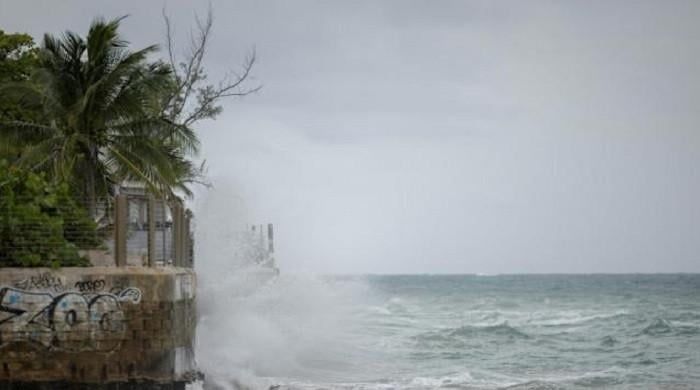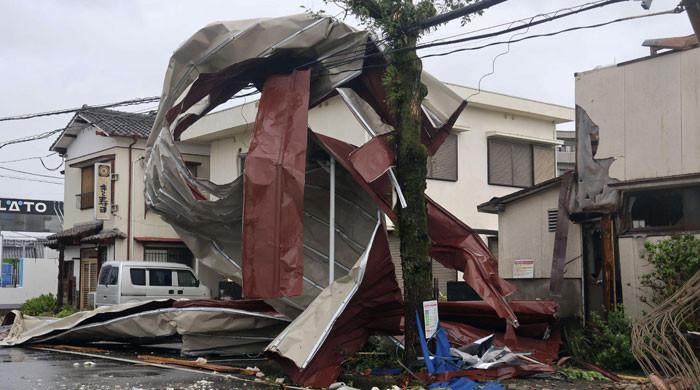- Erin Salta from category 1 to 5 in just over a day.
- Storm Center located 135 miles northwest of Anguila.
- Caribbean eyelashes with rain and winds, no land was expected.
Hurricane Erin quickly strengthened a storm of category 5 “catastrophic” on Saturday, since the rain hit the Caribbean islands and weather officials warned about possible sudden floods and landslides.
The first hurricane of what is expected to be a particularly intense Atlantic season, the Caribbean islands with rain and strong winds are expected to soak up, but it does not touch earth.
The National Hurricane Center of the United States (NHC) said in its latest report that the maximum sustained winds of the storm had increased to 160 miles (255 kilometers) per hour.
It was located about 135 miles (215 kilometers) northwest of Anguilla in the Northern Marine Islands, an area that includes the Virgin Islands of the United States and British.
A sudden flood warning was issued for Saint Thomas and San Juan in the Virgin Islands of the United States when Erin's external rain bands extended, according to the United States's weather service.
Tropical storm watches were in force for St Martin, St Barthemy, Sint Maartten and the Turkish Islands and Caicos.
“Erin is now a category 5 catastrophic hurricane,” the NHC announced early Saturday, denoting very dangerous storms with sustained wind speeds above 157 mph.
The storm reached the highest level on the Saffir-Simpson scale just over 24 hours after becoming a hurricane of category 1, a rapid intensification that scientists say it has become more common due to global warming.
The Hurricane Center is expected to move during the weekend north of the Northern Marine Islands, the Virgin Islands and Puerto Rico.
Then it is forecast to go east of the Turkish islands and Caicos and southeast Bahamas on Sunday night before weakening.
The storm could soak the islands with up to six inches (15 centimeters) of rain in isolated areas, said the NHC.
“A continuous rapid strengthening is expected today, followed by intensity fluctuations during the weekend,” the agency said in a previous report.
He also warned of “urban floods and locally considerable urban flooding, along with landslides or landslides.”
Climate danger
The waves generated by ERIN will affect portions of the Northern Marine Islands, Virgin Islands, Puerto Rico, Hispaniola and the Turkish Islands and Caicos during the weekend.
Those waves will extend to the Bahamas, Bermudas and the east coast of the United States at the beginning of next week, creating “surfings and brim currents that mortally life,” said the NHC.
The hurricane is expected to become northwest on Saturday night, then turn north in the early next week. It is expected to weaken from Monday.
While meteorologists have expressed their confidence that Erin will remain well out of the United States coast, they said the storm could still cause dangerous waves and erosion in places like North Carolina.
The Atlantic Hurricanes season is expected to extend from June to the end of November, be more intense than normal, American meteorologists predict.
Several powerful storms wreaked havoc in the region last year, including Hurricane Helene, which killed more than 200 people in the southeast of the United States.
The Oceanic and Atmospheric National Administration, which operates the NHC, has been subject to budget cuts and layoffs as part of the plans of the president of the United States, Donald Trump, to largely reduce the size of the federal bureaucracy, which leads to storm lapses fears.
Climate change driven by humans, namely, the increase in sea temperatures caused by burning fossil fuels, has increased both the possibility of the development of more intense storms and their faster intensification, scientists say.












